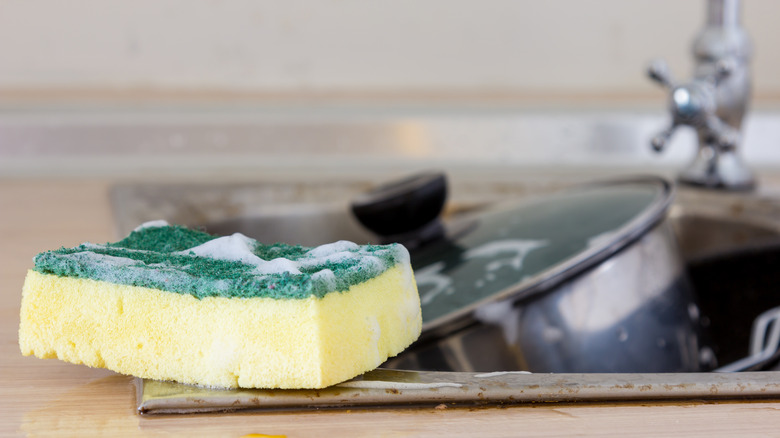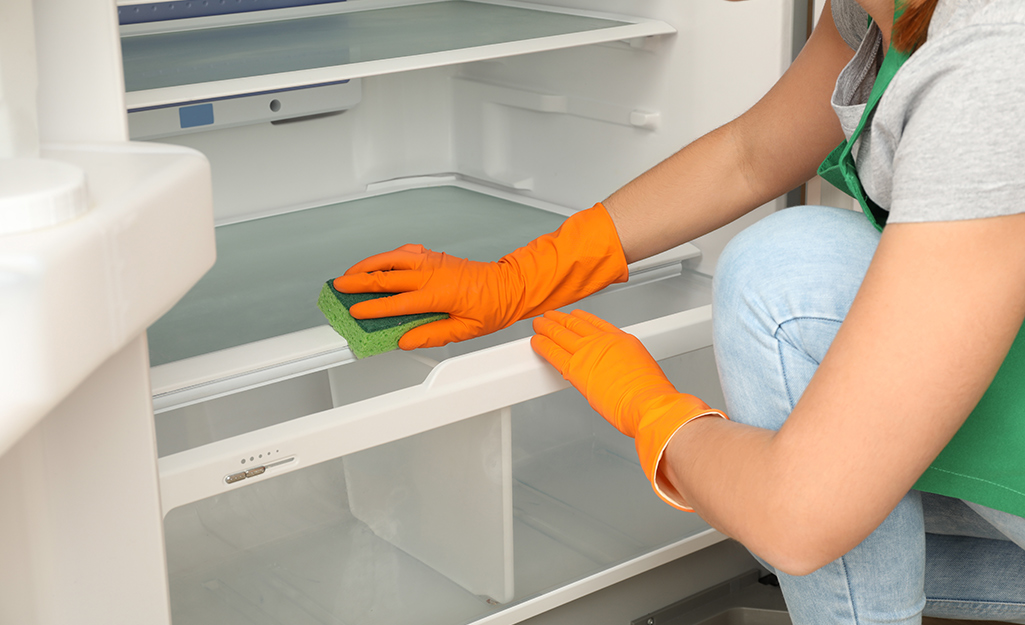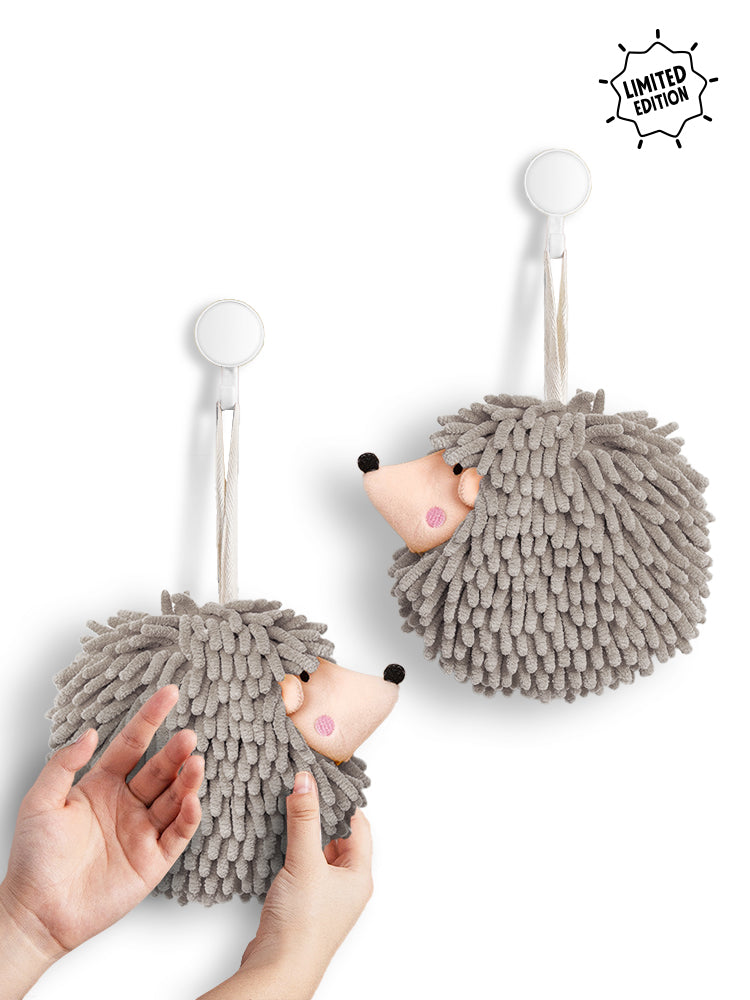
Cleaning is a necessary part of life, an essential task that keeps us (and our families) safe from harmful germs and bacteria. Of course, you don't have to be obsessive about it. “The best way is to be targeted in your approach, focusing on high-traffic areas and high-use items the most frequently,” says Jonathan Sexton, PhD, a research scientist with the Mel & Enid Zuckerman College of Public Health at the University of Arizona in Tucson.
Cold and flu season is a great time to consider these seven common cleaning oversights—and how to easily correct them for a cleaning routine that helps minimize the spread of germs in your home and prevents allergic reactions.
1. Using the Same Sponge to Clean Dirty Dishes and Kitchen Counters

When it comes to the germiest items in the home, the kitchen sponge takes top prize. Research shows that a sponge functions better than a lab petri dish as a cozy spot for bacteria to thrive. Numerous studies have found that pathogens like salmonella and campylobacter thrive in the damp, often warm environment of the sponge. And a study by the National Sanitation Foundation found that more than 75% of kitchen sponges were contaminated with coliform (such as E. coli) bacteria—which can cause pretty ugly gastrointestinal distress. “Bacteria can survive for weeks and even months in the right environment, and the sponge is a perfect place because it stays moist for a long period, allowing bacteria to grow,” Sexton says.
You’re asking for more trouble if you use that same sponge after cleaning surfaces that have been touched by raw meat, poultry, seafood, and eggs, says Jennifer J. Quinlan, PhD, professor and executive director of the Integrated Food Security Research Center at Prairie View A&M University in Texas. While not as eco-friendly, this is one area to consider paper towels. If you do use a cloth, wash it in hot water in the laundry ASAP. And when you’re done with the dishes, put the sponge in the dishwasher, where the heat will kill off potential pathogens.
2. Cleaning Certain Surfaces Without Disinfecting Them
Soap and water will get you only so far when it comes to hot zones like the kitchen and bathroom. To truly get rid of bacteria and viruses, clean first with soap and water (or products appropriate for whatever surface you’re cleaning), then use a disinfectant (like bleach or ammonia). “Soap and water remove most germs from surfaces, but to take it to the next level, use a disinfecting product/spray to kill the pathogens,” says Kristin DiNicolantonio, senior director of stakeholder communications for the American Cleaning Institute (ACI). Many disinfectants take a few minutes to do their job, so spray, let sit, then wipe.
3. Doing the Dishes But Not Cleaning the Sink Itself
“The kitchen sink is one of the dirtiest surfaces in the house,” says Sexton, with research showing up to 45% of kitchen sinks housing coliform bacteria, such as salmonella and E. coli. The danger here is cross-contamination: If you leave a cutting board you’ve used to prep raw chicken in the kitchen sink and don’t disinfect the sink, whatever else is there will be contaminated. Using dish soap and hot water will clean your dishes and pots and pans, but go a step further, especially when cleaning up after prepping raw meat or poultry, Quinlan says. “You should assume that bacteria on raw meat collects in the drain, and the only good way to get rid of it is to spray disinfectant in the sink and drain.”
Don’t forget the basket from the drain; load it in the dishwasher along with the dishes. The hot water cycle will kill off bacteria and other germs that may have accumulated in the gasket and crevices.
4. Skipping the Fridge Interior While Cleaning

You probably wipe down the front of your refrigerator regularly, but remember the inside too. Despite its colder temps, the fridge can harbor a variety of bacteria and other potentially harmful organisms.
The germiest spots are the vegetable compartments and the meat drawer, which rank high for salmonella and listeria as well as yeast and mold.
5. Cleaning Your Shower (But Not the Showerhead)

While probably not common, research has found that NTM (nontuberculous mycobacteria), a bacteria similar to what causes tuberculosis, could be spread into the lungs through water from contaminated showerheads. Cleaning the showerhead can also cut back on grime buildup, helping to prevent the nozzle from getting clogged.
6. Keeping Windows Closed While Cleaning
The chemicals in many cleaning products are great when it comes to killing harmful pathogens, but they’re not so ideal when it comes to your breathing. “Many of these cleaning products are incredibly volatile,” says Leonard Bielory, MD, professor of medicine, allergy, immunology, and ophthalmology at the Hackensack Meridian School of Medicine in Nutley, NJ. Some cleaning products release hazardous chemicals, including volatile organic compounds (VOCs), which can vaporize at room temperature, according to the American Lung Association. These chemicals can cause itchy eyes, coughing, sneezing, and headaches, especially if you have allergies or sensitivities. When using these cleaners, crack a window or keep a door open.
You can also consider cleaning products that contain fewer harsh chemicals. Vinegar, baking soda, and lemon juice can be effective and are generally less irritating. Also note that aerosol sprays can disperse chemicals into the air more easily, so try pump sprays or nonaerosol alternatives.
7. Using a Dry Cleaning Cloth While Dusting

Giving your furniture and shelves a once-over with a duster can stir up potential allergens, says Alan Goldsobel, MD, an allergist based in San Jose. “A feather duster or dry towel doesn’t really collect the dust; it just moves it about,” he says. Instead, use a damp towel or microfiber cloth, which can trap and lock in dust, reducing the amount that’s stirred up when cleaning.
Although dust mites might not bother you if you’re not allergic, they can be a major source of concern for those who do have allergies. While you’re at it, Goldsobel says, use a dehumidifier in your home to keep dust mite levels down—they tend to thrive in more humid environments.
Sources:
- All photos used in this blogpost are sourced from the internet, and the rights belong to their respective owners
- Shaffer, A. (2024b, November 23). 7 Cleaning Mistakes That Might Be Making You Sick. Better Homes & Gardens. https://www.bhg.com/cleaning-mistakes-making-you-sick-8727254


